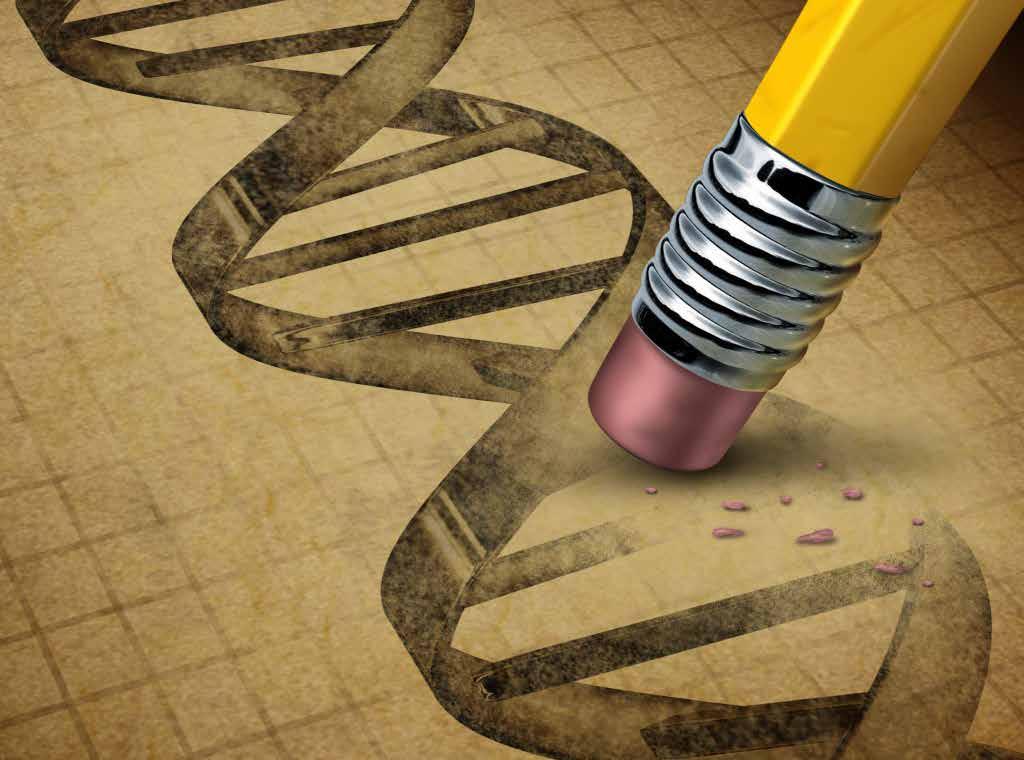
26 minute read
The psychological consequences of architecture a collection of thoughts and related research
Pruitt-Igoe Complex
Tim Emmens Lower Sixth
A “home” is always seen as more than just a house. Commonplace is the tacky “Home is where the heart is” sign, potentially in a slanted calligraphic font, maybe printed onto a cheap wooden slab - hung proudly on the wall (other soul-warming Poundland home decorations are available). But behind this cliché slogan is a wealth of untold truth. The idea has been around for millennia that the buildings we spend almost all of our time in (around 90% of our life is spent indoors) could act as more than just a roof over our heads: a first century architect Vitruvius released a ten-part publication entitled: “De Architectura Libri Decem”– “Ten Books On Architecture.” Being the earliest surviving document on architecture, this seemed to be a fitting place to start investigating the effect architecture can have on an individual. This publication is seen as the first book to include content classified as “Architectural theory” – the concept that buildings can be more than ‘bricks and mortar’. Vitruvius’s
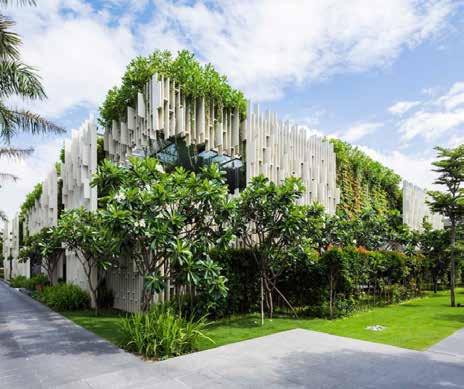
book was essentially a Bible for architects and designers, containing plans for Roman and Greek buildings, town plans, designs for harbours, machines, measuring instruments – and much more to the same effect. Vitruvius also wrote about the three aspects, or three guidelines to architecture: firmitas (strength), utilitas (functionality), and venustas (beauty).
With regard to beauty, Vitruvius had a specific idea as to what defined it – as typically, beauty standards change throughout the ages. He believed that the proportions of the human body could be used as a “model of natural proportional perfection” when building. The body could be seen as a “living rulebook” on how to build with beauty. In scope with this, according to Vitruvius, all architects must design and build to create a sense of eurythmia, “a graceful and agreeable atmosphere”, seemingly saying that an architect’s job is to make more than a building – they must take into account the effect on the inhabitants’ minds in what they do. They need to make a positive impact on how a person is feeling. How to do that is the question.
If one were to look for the key ingredients of a good building, the recipes would differ wherever you looked. So, here are several recurring flavours I have discovered, for you to digest: of course, the perspective of what makes a building ‘good’ is subjective, so using my best judgement, I have tried to be as unbiased as possible. Furthermore, being ‘good’ is a multi-faceted state: the building must be judged on how well it performs its function, how little is its ecological impact to the environment, its aesthetic; whether it preserves a previous historical style or is an new, bold approach; and to what degree
of quality this is executed; and finally how 14.4% of the energy bill, the proportion well the building preserves the health and second highest to heating, so with the wellbeing of the occupants. current concern over climate, conservation To create eurythmia within a building, is to building is at its most impressive when it is promote a healthy mindset of an occupant, successful in aesthetic, functionality, and all someone at ease with their surroundings, achieved with a low energy budget. who can relax and focus on the task at hand, and work to their “Humans can best ability. I have found that light, air quality and acoustics are three key factors to achieving To create eurythmia within a building, is to promote a survive for 30 days without eating, 3 days without drinking, this goal. Light adds so much to the beauty of a building and can healthy mindset of an occupant. yet only 3 minutes without breathing” hence be a medium itself. It the importance can be manipulated by the positioning of of air is should not [cause any] qualm. The structural openings and windows to cast quality of the air is potentially a more hardsculpted shadows, ‘bend’ gradually round a hitting criterion – if not considered, it can curved surface, or add depth and perception lead to real physiological damage and huge to a 3D space. Light can accentuate the detriments to health. In situations such as texture and colour of a surface, giving the in medical wards, a low air quality can lead observer an insight into the details of the to infection of vulnerable patients and the building’s construction, and the materials increased spread of disease, and the staff used – how each of these works alongside will not be exempt. Closer to home, bad air others within a project and the reasons quality can lead to headaches, lack of sleep for choosing them. All will have been and respiratory problems. In the office, carefully considered by client and architect high levels of CO2 can lead to drowsiness collaboratively, thus giving more insight and will seriously impede decision-making into the thoughts behind the structure. processes. I think it is evident that the Appreciating the beauty of all these details quality of air is hugely important to the can bring great joy to the observer, whose health and wellbeing of the building’s relationship with their surroundings can occupants: with good air quality, mental deepen. and physical ailments will be minimised. Light is used within architecture for which could be mechanical, natural or a three purposes: aesthetic (heretofore hybrid but some type of air flow is ideal. mentioned), function, and efficiency. As Also, vegetation - purifying plants (Palm for the second purpose, function, this plants, Dracaena and philodendron come is a most important one. In retail we can see why: prime examples of passive manipulation of the mind are seen in that Hygge of a customer affected by lighting. The exterior lighting is high intensity, bringing the customers inside, luring them in. The interior lighting radiates a sense of awe and comfort, a space in which you feel safe and reassured, resulting in easy admiration of the product. In homes, light can be used to create certain atmospheres in different rooms – cold white in the kitchen, clean, almost scientific lighting; soft and warm in the living room, creating plentiful ‘hygge’ (Danish: “a feeling or moment, whether alone or with friends; cosy, charming or special”).
In our day and age, some may argue that efficiency is the greatest responsibility of the architect regarding lighting. The energy from lighting in a typical home takes up of this energy is a priority. The lighting of a Solutions include: a ventilation system, highly recommended) clean the air and synchronously add a very “outdoor-in” chic look.
Now for the final ingredient, acoustics. Some may not think of acoustics as having much effect on the inhabitants of a building, and given the normal background noise level of our modern lives that is understandable, but nevertheless it remains a problem if unconsidered. Acoustics are also very much subject to design. The common view in most houses and offices is that the sound needs dampening to dull reverberation and give a softer sound. The acoustics can be influenced by a number of aspects: the shape and size of the room (large and high ceiling equals loud), the reflective characteristics of the surfaces (soft and porous equals good dampening), the reflective characteristics of furniture and other materials in the room (again, spongy is the way to go) and the source of the noise (loud and harsh noises are … well, loud and harsh, more likely to reverberate). In an office, echoes and loud noises would stress one out to no end, so techniques and materials such as “soundfriendly furniture”, “noise friendly flooring”, and again: plants, are all used to keep the workers sane. It seems that if you add an abundance of flora then everyone will be better off.
Unfortunately, eurythmia is not always achieved, and people do suffer as a result of a lack of care in the design and maintenance of buildings.

Curved light
A notorious example of the effects that a So many blocks of flats and high-rise some like water features, fountains, some poorly designed building can take is seen buildings in less fortunate areas of cities cannot control their bladder sufficiently for in the Pruitt-Igoe complex in Missouri. A have been criticized for a number of this sort of aquatic auditory torment every collection of high-rise apartment buildings, different things. These include their day. I am not saying I have the definitive standing between mid-1950s and midtendency to form hubs for crime, the answer for this degree of complexity, but 1970s, offers a demonstration that if not common sight of over crowdedness in I will explore a few more ideas to attempt considered properly, the social impact of an undermanaged construction, their some sort of solution. Maybe the example a building can be truly monotonous and antisocial of the fountain is too specific, and maybe damaging. A wealth of construction problems including budget cuts [I]f not considered design all of which cause known and unknown social problems. Taking all this into an idea left up to a resident vote, but the architect is not left helpless regarding solutions. Each building can be chiselled and design limitations properly, the account, one’s mood is not to fit the client’s requirements, and past immediately began to hinder the possibility of success of the buildings social impact of a building exactly being encouraged to soar. Tinie Tempah summarises this effect by this, the architect has a responsibility and a challenge to ensure each of the inhabitants is content. A perverse way of testing the – and even when built, no can be truly saying the buildings feel like architect’s success is to think about home one wanted to live there, and those who moved in, damaging. they have been, “designed for you to not succeed”. Buildings sickness. An experience witnessed by many as a result of prolonged separation from moved out shortly after. should be supportive the home. If you think about it, it seems Complaints about lack of air quality and and enjoyable, never discouraging. strange, the attachment to a collection functional facilities were commonplace, yet The architect is the sole distributor of of brick, timber, and plaster (etc.) to the a solution was not seen as possible, with a happiness. If they have the knowledge, point of physical sickness for some. But lack of funding to the local authorities to through research or collaboration, about logically, it would make sense for us to miss inject into a maintenance work force. what their the spaces that usually work will really [T]he architect has surround us, which make The apartment block was also an infamous centre for “crime, squalor and social dysfunction”, the cause of which, was not do to people, they should act accordingly, a responsibility and a challenge us feel calm, safe and happy and inclined to utilise our peak levels of apparent. Critics of the Pruitt-Igoe complex designing a to ensure each of production. blamed the huge spaces between each (“featureless”) block as a major problem. This is said to be a huge discouragement building that makes a good starting block to the inhabitants is content. As obvious as it sounds, happiness is the aim. It of social interaction between the blocks, someone’s day, is the job of the architect and as social beings: relationships, groups, even life. to contribute to a person’s well-being and those “morning neighbour!” friendly However, yes, there is yet another problem, and happiness by carefully crafting their salutations keep us running. The isolation what is good, and what makes you happy, surroundings to endorse the feel-good of communities and individuals can only is subjective. How can architects design a factor, encourage the neighbourly greetings lead to feelings of rejection and exclusivity, building, used by, say, a thousand people, and get the endorphins flying. The benefits possibly leading to mental health problems: and make each one of them take a look at of a truly happy society are, if achievable: anxiety and depression being the most their surroundings, and smile. Some like limitless. prevalent. curvy lines, some like angular features,

Can geoengineering solve the global warming crisis?
Geoengineering is the use of technology to modify the Earth’s environment on a large scale. Many scientists argue that it has the potential to solve the impending problem of global warming. At the moment, the present level of carbon dioxide is 385 parts per million (ppm), which is one third higher than the pre-industrial level of 278ppm. If carbon dioxide levels continue to rise unchecked, global temperatures could rise between 1C and 5C by 2100, which would lead to catastrophic results, which is why many are in favour of geoengineering techniques. There are two main types of geoengineering: solar radiation management (SRM) which aims to increase the reflection of incoming solar radiation, and carbon dioxide removal (CDR) from the atmosphere. However, these also have their disadvantages and many people argue with the predictability of geoengineering and believe that the focus should be on reducing greenhouse gas emissions.
Solar Radiation Management (SRM) involves proposals to reduce global warming by reflecting a percentage of sunlight back into space. This would mimic the natural processes
Molly Steven
Lower Sixth
Another SRM method is cloud whitening. This involves salt particles formed from evaporation being sprayed into clouds in the atmosphere. A higher concentration of particles in the clouds increases their density, leading them to become whiter, and therefore increasing their albedo, meaning that more solar radiation is reflected into space. However, this method will have a significant effect on weather patterns, and may increase rainfall in some areas, whilst also reducing rainfall in other areas. For example, a sudden substantial reduction in precipitation over a delicate ecosystem such as the Amazon rainforest would have disastrous consequences. Organisations such as Greenpeace want greater One SRM method is adding sulphur possible impacts of methods such as these particles to the stratosphere in order to in order to assess accurately the possible partially reflect solar radiation to space. consequences. scientific research into the that occur during a volcanic eruption, Carbon Dioxide Removal (CDR) is the where sulphur dioxide gas is released and removal of carbon dioxide (and other combines with water greenhouse gases) to form sulphuric acid aerosols that reflect incoming solar Greenpeace does not support from the atmosphere and storing them, lowering greenhouse radiation. Researchers geoengineering gas levels and predict that sulphur aerosol dimming which reduces annual because it says it distracts from the therefore aiding in reducing global warming. incoming solar radiation real solution of by 2%, would counteract the global warming reducing emissions. One CDR method is ocean fertilisation. caused by the increased This is where iron, carbon dioxide levels since the Industrial nitrogen or phosphorus is added to the Revolution. This shows it has the capability oceans to stimulate the growth of blooms to be an effective solution. This technique of algae and phytoplankton, which take is noted to have some potential, as the part in carbon sequestration as they grow. UK SPICE project actually planned small Then when they die, they will take this scale trials of sulphur aerosol deployment, carbon with them to the ocean floor, where although it was put on hold for further it will be stored for millions of years as public discussion, as the associated risks sediment. Many research programmes have for the environment are so far relatively been started around ocean fertilisation unknown. so there clearly is some potential in this
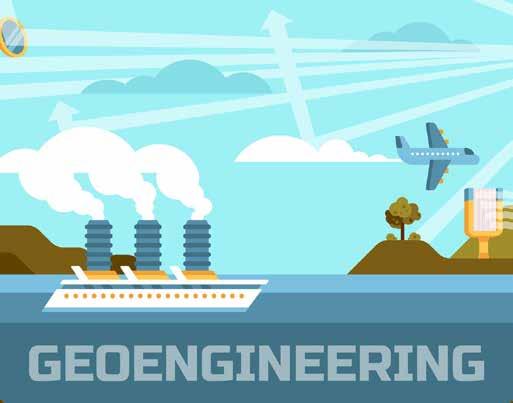
method as a way of helping reduce global that “climate related geoengineering warming. An example is KIFES whose activities should not take place until interest is to provide “a clear answer as to there is … appropriate consideration of whether ocean fertilisation is promising as the associated risks for the environment a geoengineering and biodiversity”. solution.” However, a drastic change in the numbers Geoengineering... could be used as a Some techniques are more likely to be more harmful to the of phytoplankton subsidiary technique environment than could have potentially very damaging to combat climate change, while others. For example, ocean fertilisation has already been flagged as effects on marine the main aim is having many potential ecosystems, because they form the basis of the focused on reducing emissions. environmental issues, such as the effect on the marine food marine food chain. chain if growth of Algal blooms also deplete oxygen supplies, phytoplankton increases drastically. On further damaging delicate ecosystems. the other hand, some geoengineering Another CDR method is the use of artificial are predicted to have minimal negative trees. These are machines that capture impacts on the environment, besides the carbon dioxide from the air and filter it out. space they would take up, and huge positive A plastic resin is used to capture the carbon effects with decreasing the levels of carbon dioxide from the air as it passes through dioxide. the ‘trees’. It is estimated that a single sheet of resin the size of a door could extract There is also concern that geoengineering up to 700 kg/day of carbon dioxide. This may lessen the responsibility that people extracted carbon dioxide can then be stored have to consider the long-term response underground. Making each individual tree to climate change, as if we can control the would take some money and resources, short-term response with geoengineering, but the carbon dioxide given out making it then the pressure is taken off governments would only amount for around 5% of carbon to take action that would be beneficial in dioxide that the tree could take in, showing the long-term. This is why some people the huge capacity that these trees could believe that geoengineering techniques have. Other than the fact that space is could be used as a subsidiary option, to required to build these structures, artificial help combat the effects of global warming. trees have minimal negative impacts. However, the main focus is still on Although some geoengineering techniques is the cause of global warming, and is what show potential in helping to reduce global will bring about an effective long-term warming, there are many concerns that response. For example, it is predicted that have been raised. For example, Greenpeace SRM could reduce global temperatures does not support geoengineering because very rapidly. However, without actual it says it distracts from the real solution of reducing emissions. They are not against research for geoengineering techniques that is fully justified, but they believe that investment should mainly focus on the cause, and not the effects of global warming. As an example of this, Greenpeace in the UK has called for the government to triple renewable power from wind and solar by 2030, and therefore are addressing the root source of global warming, increased fossil fuel use.

Many organisations also want further research into the possible risks and effects that geoengineering may have on the environment. For example, the UN convention on Biological Diversity agreed techniques such as the use of artificial trees reducing greenhouse gas emissions, as this reductions in the amount of greenhouse gases in the atmosphere, SRM would need to be maintained for a long time, and if it suddenly stopped, there would be accelerated increase in the effects of climate change.
In conclusion, although there are many concerns regarding the feasibility of geoengineering, I believe that some techniques, with more extensive research, could be viable options in fighting climate change. For example, the science behind artificial trees suggests that it is feasible, so with more research this technique could be significant in helping to counteract humaninduced climate change. However, I believe that the most crucial step that can be taken to combat global warming is to reduce our greenhouse gas emissions, and start at the root cause. If too much focus is placed on geoengineering techniques and the short-term response they would provide, then the pressure is taken off governments to focus on the long-term response to climate change. Geoengineering, with more scientific research to prove its predictability, could be used as a subsidiary technique to combat climate change, while the main aim is focused on reducing emissions.


Emily Nellist, Upper Sixth. ‘Self’
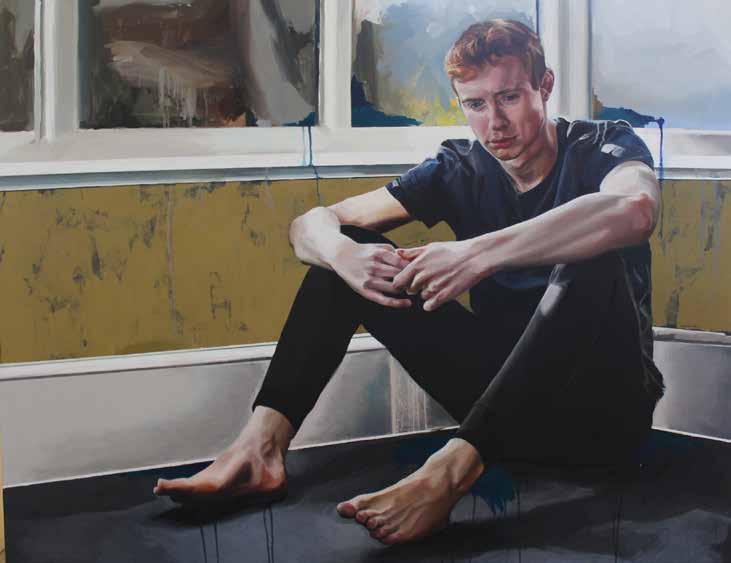

CRISPR CAS-9: for good or for worse
Will Coni Upper Sixth
Jennifer Doudna

Since the genome project launched in 2000, genetic research has become even more of an influential practice among leading research institutions. Its potential utility for medicines comes as a significant cause for this rise in interest, but it also coincides with the constant developments in genetic technology.
Human nature is, to an extent, predetermined. Our genetic make-up (or our genome) can mostly explain how we look and how we behave. But environmental factors also have a say in our characteristics- for example, how tall we are, or the blemishes on our skin. Environmental factors can only affect our phenotypes, and would not influence what our genetic code reads. But the genetic code can in fact be altered indirectly through environmental factors - the recent research into epigenetics shows how specific genes in specific cells can be affected because of our environment, they can either cause the gene to be made inaccessible, preventing remember the different viruses that it has the expression, or it would increase its been exposed to over a lifetime, and uses accessibility, promoting its expression. This this as a ‘vaccination card’ in defence to would then affect not only the phenotype future attacks from the same viruses. When of the gene but would also lead to small a virus which the bacteria has previously external changes in the actual genes, been exposed to returns and inserts viral in which the probability of this change DNA into the cell’s genome, a copy of being inherited to offspring is low, but not the viral DNA in its CRISPR site is made. impossible. Any slight change to genetic This is a single-stranded piece of RNA. material that is permanent, is significant, The protein called CAS-9 can then attach due to its potential effects on future human to this piece of RNA, and form a complex generations. This is why CRISPR CAS-9 that allows it to attract towards the is such a hot topic of discussion, because corresponding section of viral DNA in the CRISPR CAS-9 can lead to a permanent, genome, when bound, the CAS-9 protein inheritable alterations in the cells’ genome. binds to the DNA, and cuts it precisely The CRISPR-CAS-9 mechanism was It then binds together the broken ends realised by chance when looking into the of the bacteria’s DNA using ligase, or it CRISPR sequences in the E.coli’s genome, incorporates a new section of DNA to mend in 2007. But the key breakthrough came in the broken ends. 2012, when teams in the US and Europe to remove the viral DNA, and destroy it. led by Jennifer Doudna and Emmanuelle The break by CAS-9 is precise and doubleCharpentier began to utilise the CRISPR stranded. This can be used by geneticists, tool to ‘cut and paste’ DNA. Today it is as it is programmable. The section of RNA being used in clinical trials for CAR-T cell it binds to can be forged specifically so that gene therapy, in modifying cancer patients’ the corresponding section of DNA can be immune cells, so that they can recognise removed. A new double stranded section the cancer in the body and attack it when of DNA (containing a new gene) with placed back into the body. However, the corresponding DNA ends can then be easily CRISPR CAS-9 kit is readily available inserted to repair the break. online, possibly to someone whose aim for One example where this could be used, is its use in medicine may not be a priority. in sickle cell anaemia. Sickle cell anaemia is a genetic disease in which it is caused by Viruses are clever in the way they attack one base substitution mutation in a single and target cells. When attacking a mutant allele of the gene for the production bacterium, they use an of the beta-polypeptide enzyme called reverse transcriptase to convert their viral RNA into DNA Jennifer Doudna and Emmanuelle in haemoglobin. When screening an early embryonic mass, the which can then be inserted Charpentier mutation for sickle directly into the target cell’s genome. The DNA is directly inserted into the began to utilise the CRISPR tool cell anaemia can be detected using DNA probes. If positive, the cell’s plasmids, causing to ‘cut and paste’ corresponding RNA the bacteria to produce virus cell structures and DNA. (with the mutation) of this gene can be formed viruses. However, bound with a CASthe cell can ‘remember’ a virus to prevent 9 protein, to form a complex in which a future attack. They use a site called it can naturally find the mutation in an CRISPR- which is an area in the bacteria’s early-stage embryonic mass, and removes genome with DNA in clustered regularly the gene. Once removed, the ends of the interspaced short palindromic repeats. broken chromosomes can bind, or a new They insert small sections of the viral DNA functional allele of the gene can be inserted into this site, and use their CRISPR locus to in. This cell can then multiply, and the
Sickle Cells
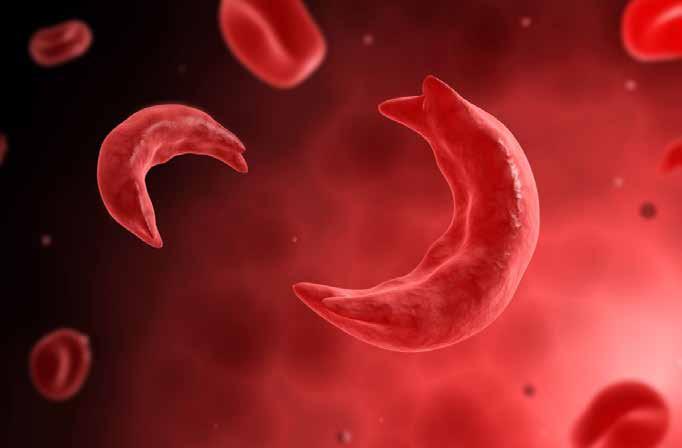
embryo can form from this cell with the for the variant, it leads to “jitters” in the genetic modification. The mutation will individual. These variants that may be not be present in the body, the human seen as disadvantageous, are actually wouldn’t suffer, and there would be no important to the gene pool, so are good in chance of passing the disease on to the next low frequency. But CRISPR may lead to the generation, as the mutation is no longer removal of these variants for regular alleles, part of the genome. and many other alleles like these. The removal on a mass scale of these variant There is much of the genome that is still alleles that cause behavioural disorders undiscovered, for example, the genes would lead to external effects on the bodily that code for synaptic connections in functions, as these very same variants may the brain. Removing the be advantageous in the part of the genome that may code for polypeptide There is much gene pool. linked with a synaptic of the genome Genetic variation is a connection would lead to dire consequences for the individual. The recent that is still undiscovered. trade-off, a section of mutated DNA that leads to: cancer, auto-immune research into behavioural diseases and schizophrenia, disorders, such as autism has found that may also lead to the production of an they may be caused by a number of specific immune cell that can detect the presence variants in alleles across the genome. They of an infection earlier than usual. (This was can be known as “many assorted genes of actually discovered by a German biologistsmall significance”. It would not be viable it is called the major histocompatibility to genetically modify to remove these complex). The introduction of gene removal variants due to their possible ‘pleiotropic’ in a field that is relatively unknown is tendencies. evidently dangerous. Not only can we remove useful genes for ‘desirable’ ones, but APEO4 is a variant of an allele of a gene “designer babies” as a concept can vastly that leads to Alzheimer’s, but it also leads reduce genetic variation in the long-term. to an increase of uptake of vitamin D. A The course of natural selection of humans variant of an allele of the gene COMT depends on the size of the gene pool. We can cause an increase in activity and have needed the variability of alleles so concentration when heterozygous with that if a change in the environment was to another regular allele, but if homozygous occur, specific alleles of genes available in 53 the gene pool could facilitate this change to the environment. There are various mechanisms in meiosis that ensure the level of genetic variation is kept high and consistent. Also, the occurrence of regular random mutations in the genome between generations sustains high variation in

the population. Even if the population removal of disadvantageous, debilitating decreases in size, the level of variation can alleles of genes, (such as the one for sickle be maintained. With CRISPR-CAS-9 it is cell anaemia). Everyone would modify the possible to insert any gene in the place embryos to similar characteristics, due to of another so that this gene is expressed the similarity in what we as humans prefer. and inherited. However, say for instance, The desirable alleles would also almost a single allele of a gene for rapid muscle certainly be advantageous, and thus would growth was extracted, and inserted into increase in frequency throughout the gene an embryo, so that, when formed, the pool over time. This can vastly reduce human has much larger genetic variation muscular mass than [T]he decrease within the human usual. If this is even slightly advantageous, it is more likely that they in variation is a fundamental flaw population. A smaller gene pool distorts the forces of natural would live long enough that would be selection. There to reproduce, passing it down to the offspring, caused by CRISPR. would not be a stable foundation in which who could then also the human population experience the advantage. The frequency of can adapt to changes in the external this allele would increase in the population environment. Say, for example, there was a over time, the rate at which is dependent on sudden introduction of a harmful bacteria how advantageous it is to us, and the size of from the melting of the icecaps, and the the population. gene pool had become so small that there If it was freely available to modify embryos was no individual that maintained any genetically, and certain desirable alleles of allele of any gene that could withstand the genes were chosen, such as: high mental introduction of the bacteria, as they have ability, high physical ability, certain possibly been ‘wiped’ during the effects physiological characteristics, the alleles of CRISPR embryonic gene editing. The of genes for these phenotypes would be human race would be severely damaged, inserted into many of the embryos in and it could possibly lead to extinction. question. This would coincide with the This is obviously an exaggeration, and it is likely that a cure would be forged before it led to extinction, but the decrease in variation is a fundamental flaw that would be caused by CRISPR.
The path down genetic modification is full of uncertainty. Lead researchers can only hypothesise the complete effects of what this tool can do. Precaution is needed, if this is to be used to benefit us. It is important that the objectives behind the people who have access to CRISPR align with the proposed use it has in human Medicine. It is easy to forget how influential this could be, and the dire impacts it could have. The reduction of variation in the gene pool is principally the most dangerous. As scientists look to the future of technology, and the direction it is headed, the research needs constant ethical evaluation. The idea of consequentialism needs to be in the foreground of proposed ideas.
